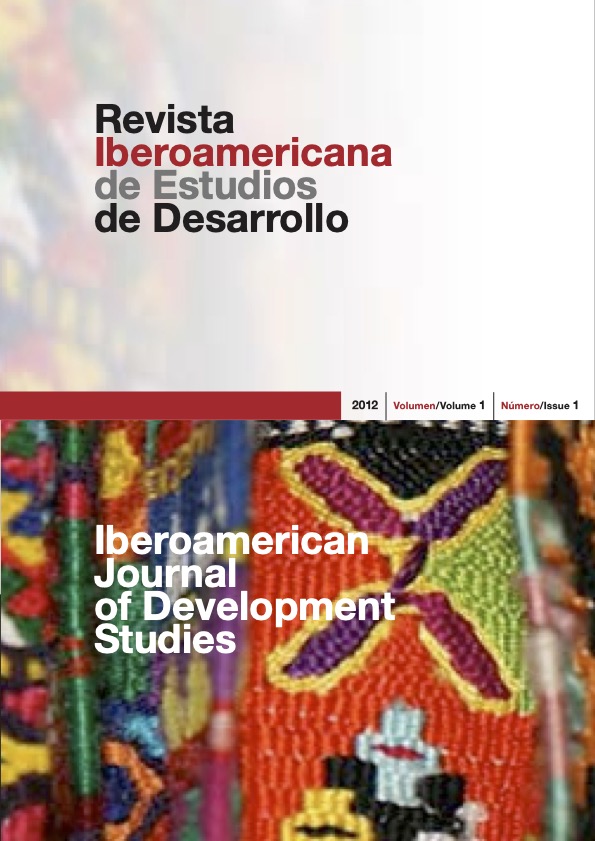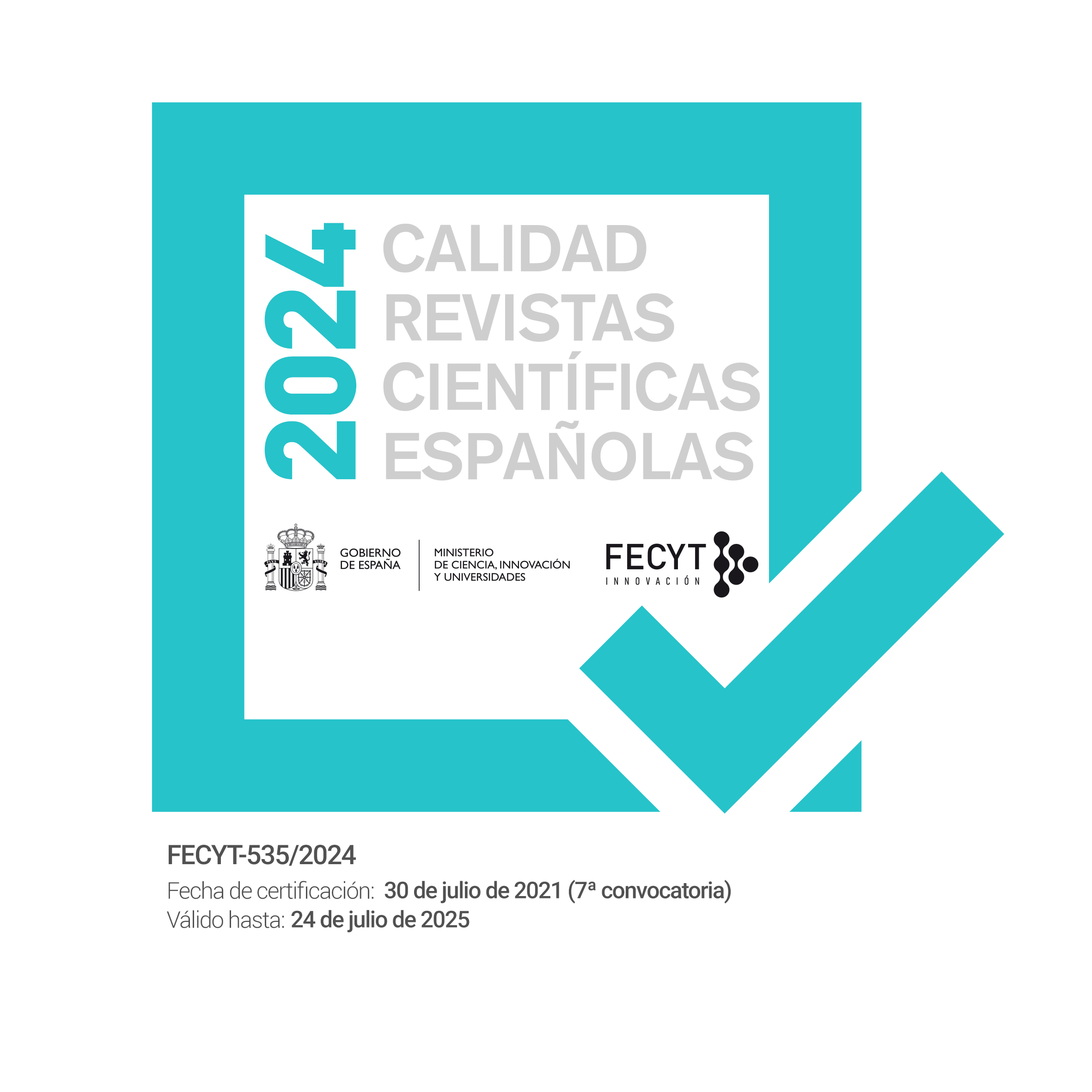Global Financial Partnerships in microfinance: India, Peru and Tanzania
DOI:
https://doi.org/10.26754/ojs_ried/ijds.35Palabras clave:
microfinanzas, financiación mayorista, Perú, India, TanzaniaResumen
El artículo estudia los mercados mayoristas en que se financian instituciones de microfinanzas de tres contextos (Perú, Tanzania y el estado de Tamil Nadu en India). La naturaleza y las características de las relaciones entre ellos son capturadas mediante análisis de redes y herramientas de visualización, empleando una base de datos que contiene relaciones de préstamo entre organizaciones y atributos organizacionales de los años 2006-8. Se pone el énfasis en el vínculo entre los modelos de relaciones de préstamo mayoristas, la naturaleza legal y las características de las instituciones de microfinanzas; el entorno regulatorio, de negocios y social en el que operan; y los cambios en el balance entre los intereses sociales y comerciales de los distintos tipos de proveedores de financiación.
El análisis pone de manifiesto una considerable variación entre países en cuanto a la estructura y los patrones de financiación mayorista, que se relaciona principalmente con diferencias en gobernanza y regulación. Sobre esta base, se argumenta que la construcción de un entorno regulatorio más facilitador mejoraría la capacidad de alcanzar el doble objetivo de alivio de la pobreza y sostenibilidad financiera por parte de las microfinanzas.
CITAR COMO:
Marr, A., Tubaro, P. (2012). Global Financial Partnerships in microfinance: India, Peru and Tanzania. Iberoamerican Journal of Development Studies, 1 (1): 28-57
Descargas
Referencias
ADA (2009). Does foreign ownership in microfinance interfere with local development? Discussion paper n. 1
BALKENHOL B (ed) (2007). Microfinance and Public Policy: Outreach, Performance and Efficiency. Palgrave Macmillan
BOGAN V, JOHNSON W, MHLANGAY N (2007). Does Capital Structure Affect the Financial Sustainability of Microfinance Institutions? Mimeo, Cornell University, USA
BORGATTI SP, EVERETT MG (1997). Network analysis of 2-mode data. Social Networks 19 (3):243-269
BOÚÚAERT M (2008). A Billion to Gain? A study on global financial institutions and microfinance. Commissioned by ING
CFI (2010). Client Protection in Peru. Center for Financial Inclusion. ACCION International. http://www.centerforfinancialinclusion.org/Page.aspx?pid=1641 Accessed on 25 Jul 2010
CGAP (2010). Summary of current regulatory issues in India, Peru and Tanzania. http://www.cgap.org/p/site/c/template.rc/1.26.13731/ ; http://www.cgap.org/p/site/c/template.rc/1.26.13729/ ; http://www.cgap.org/p/site/c/template.rc/1.26.13740/ ; Accessed on 26 August 2010
CHRISTEN RP, LYMAN T, ROSENBERG R (2003). Guiding Principles for Regulation and Supervision of Microfinance. Consultative Group to Assist the Poorest, Washington, DC
CULL R, DEMIRGÜÇ-KUNT A, MORDUCH, J (2009). Microfinance Meets the Market. Journal of Economic Perspectives, Volume 23, Number 1, Winter, pp 167-192
DRUSCHEL K (2005). The Ultimate Balancing Act: Investor Confidence and Regulatory Considerations for Microfinance, microREPORT #28. USAID
EIU (2009). Global Microscope on the Microfinance Business Environment. Economist Intelligence Unit. The Economist
FORSTER S, REILLE X (2008). Foreign Capital Investment in Microfinance: Balancing Social and Financial Returns. CGAP Focus Note, N.º 44, February. URL: http://www.cgap.org/gm/document-1.9.2584/FocusNote_44.pdf
FSDT (2006). FinScope Key Findings and Statistics 2006. Internal FSDT report. Financial Deepening Development Trust (FSDT), Tanzania
GHOSH S, VAN TASSEL E (2011). Microfinance and competition for external funding. Economics Letters, vol. 112, issue 2, pp 168-170
GONZÁLEZ, A (2010a). Microfinance Funders Profiles. A Short Guide for Young and Small Institutions Still Looking for a Match. MIX Data Brief 6
GONZÁLEZ, A (2010b). Microfinance Synergies and Trade-offs: Social versus Financial Performance Outcomes in 2008. MIX Data Brief 7
HARTARSKA V, NADOLNYAK D (2007). Do Regulated Microfinance Institutions Achieve Better Sustainability and Outreach? Cross-Country Evidence. Applied Economics 39(10-12):1207-1222
HERMES N, LENSINK R (2011). Microfinance: Its Impact, Outreach, and Sustainability. World Development Volume 39, Issue 6, June 2011, pp 875-881
KANE S, NAIR D, OROZCO V, Sinha S (2005). Peru: Microfinance Investment Environment Profile http://www.microfinancegateway.org/gm/document-1.9.41450/10.pdf [Accessed on 22 June 2010]
LAZEGA E (2009). Théorie de la coopération entre concurrents: Organisation, marché et analyse de réseaux. In: Steiner Ph, Vatin F (eds). Traité de sociologie économique. Presses Universitaires de France, Paris
Lok Capital (2010). Microfinance industry in India. Gurgaon, Lok Capital
MCINTOSH C, WYDICK B (2005). Competition and Microfinance. Journal of Development Economics, Volume 78, Issue 2, December 2005, pp 271-298
MARR A, TUBARO P (2011). Crisis in Indian microfinance and a way forward: Governance reforms and the Tamil Nadu model. Journal in International Development, ID:JID1823, forthcoming
MERSLAND R, ØYSTEIN STRØM R (2009). Performance and governance in microfinance institutions. Journal of Banking & Finance, Volume 33, Issue 4, pp 662-669
MERSLAND R, ØYSTEIN STRØM R (2010). Microfinance Mission Drift? World Development, Volume 38, Issue 1, January 2010, pp 28-36
MATTHAUS-MAIER I, Von Pischke JD (eds) (2009). New Partnerships for Innovations in Microfinance. Berlin, Springer
MicroRate (2009). Cautious Resilience. The Impact of the Global Financial Crisis on Latin American & Caribbean Microfinance Institutions
MORDUCH J (2004). Managing Tradeoffs. ID21, special issue on What Role for Microfinance? Reframing the Questions
NABARD (2008). Status of Micro Finance in India 2007-08. National Bank for Agriculture and Rural Development. India
PAWLAK K, MATUL M (2004). Realizing Mission Objectives. Journal of Microfinance, vol. 6, nr. Winter, p. 1
PENALVA E (2007). Réseaux et régulation d’un marché financier ‘socialement responsable’ : En attendant la concurrence. Doctoral dissertation, Université des Sciences et Technologies de Lille
RHYNE E (2009). Microfinance for Bankers and Investors: Understanding the opportunities and challenges of the market at the bottom of the pyramid. McGraw Hill, New York
ROBINSON MS (2001). The Microfinance Revolution: Sustainable Finance for the Poor. World Bank
SAMN (2009). Prospects for Investment in South Asian Microfinance. South Asian Microfinance Network. 94 pp. April 2009
SBS (2009). Internal reports 2007-2008. Superintendencia de Banca y Seguros del Perú
SOUSA-SHIELDS M, KING B (2005). MFI Financing Strategies and the Transition to Private Capital. Enterprising Solutions report to the USAID
The Economist (2008). 2008 Microscope of the Microfinance Business Environment in Latin America and the Caribbean. Economist Intelligence Unit, October 2008
Triodos (2007). Tanzania: Country Scan Microfinance. The Netherlands: Triodos Facet
UNDP (2009). Human Development Report 2009. Overcoming Barriers: Human Mobility and Development
WOLLER G, DUNFORD C, WOODWORTH W (1999). Where to Microfinance? International Journal of Economic Development, vol. 1, n.° 1, pp 29-64
Descargas
Publicado
Número
Sección
Licencia
Derechos de autor 2012 Ana Marr, Paula Tubaro

Esta obra está bajo una licencia internacional Creative Commons Atribución-NoComercial-SinDerivadas 4.0.






